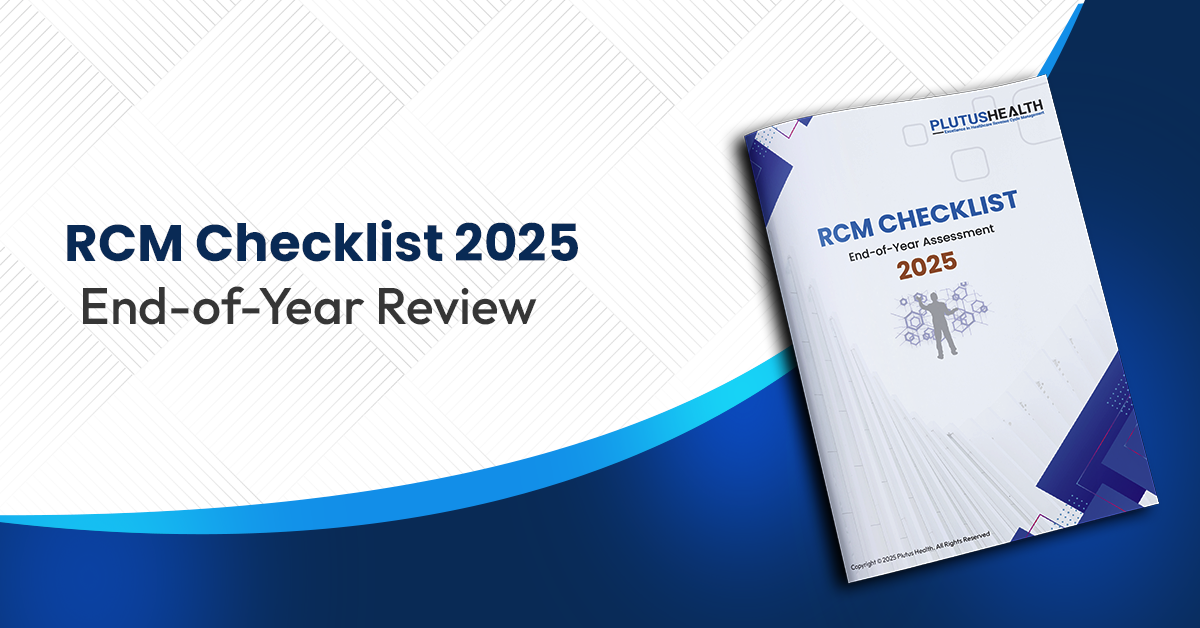Telehealth : Broadening the Reach of Applied Behavior Analysis (ABA) in Unprecedented Ways

TeleHealth :
Broadening the Reach of
Applied Behavior Analysis ( ABA
in Unprecedented Ways
Contents :
Expanding ABA: Therapeutic Access Through Technology
The Telehealth Healthcare Delivery Model
Technical Considerations And Guidelines For Telehealth Services
Risk Assessment Prior to Initiating Telehealth Services
Challenges in Telehealth and Recommendations
Assessment of Telehealth Effectiveness
Telehealth for ABA during the COVID-19 Crisis Useful Resources
Useful Resources
Expanding ABA:Therapeutic Access Through Technology
Telehealth refers to the use of technology by licensed clinical practitioners to provide therapeutic care to patients with developmental/behavioral concerns.
Through electronic and communication technologies like the Internet and videoconferencing, this unique service delivery model enables behavioral experts to provide the same kind of real-time therapeutic interventions from a remote location that they would from their office.Since it enables the delivery of Applied Behavior Analysis(ABA) therapeutic services directly to patients without requiring them to travel, this healthcare model is a valuable and effective way to increase patients' access to specialized, high-quality behavioral health services. In particular, under served communities such as rural areas which often suffer from infrastructural challenges like shortage of licensed/qualified providers and limited access to specialty care, can benefit from telehealth services.
Since telehealth provides a powerful means to extend the reach of behavioral healthcare resources to those who need them the most, ABA providers who have not yet embraced telehealth should consider it as a genuine and complementary means to deliver therapy, training, consultations and other services more efficiently and cost-effectively.
The Telehealth Healthcare Delivery Model
It’s important to note that telehealth is an alternative means of delivering healthcare, not a separate healthcare service. In other words,it is not a replacement for in-person ABA health services but a complement.
Licensed ABA practitioners can deliver telehealth services using two modalities:
Synchronous telehealth : This is the most commonly employed modality within ABA therapy service delivery models and refers to real-time, two-way audio/video interactions between provider and patient. It could involve talk therapy or directed trial training sessions.
Asynchronous telehealth : Asynchronous telehealth includes the transmission of electronic health records to a provider at another site for later review. Although this modality has multiple benefits, it is not as widely implemented. One reason for this is that it is not covered by most healthcare funders, even those that otherwise authorize ABA therapy.
Technical Considerations and Guidelines for Telehealth Services
Organizations offering telehealth ABA services need to consider a number of technical factors so that patients have the best possible chance of benefiting from the service.
Hardware and software : Therapeutic providers must ensure that both patients and providers have access to high-quality, high-speed telehealth technology so that both parties accurately understand and interpret the two-way communication. They should budget for both essential and supplemental equipment including telehealth clinician equipment and direct-care staff equipment. All major technology components and devices including (but not limited to) cameras, monitors,microphones, speakers, etc. should be well-maintained and replaced as and when necessary to ensure that telehealth clinical results are comparable to on-site, face-to-face results.
Telehealth physical office design : The physical arrangement of the telehealth provider site must provide adequate comfort and privacy for the patient. Proper lighting, no distractions,professional decor, muted clothing (of the provider) and optimal camera angles are all essential to create a strong and trusted therapeutic alliance with the patient.
Credentialing and licensure : Organizations providing telehealth therapy must comply with the licensing and credentialing laws for their profession in both the jurisdiction/state in which they are practicing as well as the jurisdiction/state in which the patient is receiving therapy.
All staff performing therapeutic assessment and therapy via telehealth must be credentialed within their clinical organization and by the Payer in that state where they provide services. In addition, clinical professional licensure requirements for telehealth are the same as for on-site face-to-face services. However, these may vary from state to state, so clinical professionals (and organizations) are required to adhere to the specific requirements of each state’s licensing authority.
Staff must also be trained in howto use telehealth equipment in accordance with organizational policies prior toinitial use.
Patient privacy and confidentiality : Patient privacy and confidentiality must be maintained at all times while receiving telehealth services, in accordance with, but not limited to the United States Health Insurance Portability and Accountability Act (HIPAA), Alcohol and Drug Confidentiality Regulations in 42 CFR, Part 2 and state regulations. Within the U.S., HIPAA requires the encryption of electronic, protected health information. All privacy policies must be discussed with the patient before telehealth assessment/therapy begins. This review along with details of all persons involved must be documented in the patient’s records.
Patient rights : Among other rights, patients undergoing telehealth ABA therapy have the right to request in-person face-to-face assessment or therapy before a telehealth assessment or therapy is conducted. They have the right to know about the benefits and risks involved in utilizing telehealth technology and what they can expect from a telehealth encounter. The patient also has the right to terminate the telehealth assessment or therapy at any time, and request that the appointment be conducted on-site, face-to-face instead.
Risk Assessment Prior to Initiating Telehealth Services
Before initiating any telehealth procedure, providers should complete a formal admissions process to determine whether it is clinically appropriate to deliver ABA therapy to the patient using telehealth. Once this determination is made, a thorough risk assessment should be performed to address these areas and mitigate risks, if any:
Patient safety : It is essential to ensure that the patient can be safely served via this delivery model, especially if they have a prior history of aggressive and/or self-injurious behavior.
Therapeutic environment : A complete assessment must be carried out on the environment to ensure that it is therapeutically beneficial for the patient and staff. The telehealth provider making the assessment should also flag any safety risks present in the patient’s telehealth setting (home, school, etc) such as a swimming pool the patient may jump into or a closet they may lock themselves into if they feel distressed during the session.
Local provider expertise : A complete assessment must be carried out on the environment to ensure that it is therapeutically beneficial for the patient and staff. The telehealth provider making the assessment should also flag any safety risks present in the patient’s telehealth setting (home, school, etc) such as a swimming pool the patient may jump into or a closet they may lock themselves into if they feel distressed during the session.
Challenges in Telehealth and Recommendations
Telehealth has been used for over 30 years in many healthcare fields such as dermatology, psychiatry and surgery. Now it is enjoying a boom in the area of ABA as well. However, some unique challenges have arisen in this field that require careful consideration.
Policies and safeguards : These are absolutely critical to ensure that patient privacy and confidentiality are maintained at all times.
Training : ABA providers must receive specialized training to ensure that they can safely and effectively deliver behavioral healthcare remotely.
Social barriers : Since telehealth service delivery usually involves geographic distances, it can create cultural gaps between patients and providers. These gaps may be rooted in linguistic or accent differences, dissimilar thoughts and beliefs or even a lack of technological literacy. These gaps can lead to conflicts which must be addressed before telehealth therapy can begin.
Professional conflicts : Conflicts may arise when professional boundaries are challenged due to patients having relationships with local clinicians and telehealth service providers. These must be addressed early on to ensure the best possible outcome for telehealth patients.
Regulatory ecosystem : Telehealth providers must comply with various federal and state regulations and policies around licensure, patient privacy, supervision ratios, etc.
Assessment of Telehealth Effectiveness
The telehealth therapeutic assessment or therapy being conducted should be regularly evaluated to determine its effectiveness in garnering positive outcomes for patients. Questions that could be considered in such as evaluation may include:
- What was the percentage of assessment or the therapy conducted by telehealth ?
- What was the percentage completed?
- What was the percentage not completed? Why?
- Are wait times fortelehealth therapy lower than in-person therapy?
- What is the rating provided by the patient's parent or guardian regarding the efficacy of the telehealth therapeutic model?
Telehealth for ABA during the COVID-19 Crisis
Due to the Corona virus (C0VID-19)pandemic, ABA practitioners are moving towards telehealth services (which many funding sources are authorizing) to reduce direct contact with clients and curtail the spread of the virus. In the midst of this crisis, telehealth ensures that patients continue to receive the best possible and medically necessary therapeutic care.
Nonetheless, parents or guardians considering telehealth ABA therapy for their children or wards must be aware of the considerations that may affect them during the pandemic:
Cost-sharing : Cost-sharing procedures for telehealth services may differ from cost-sharing for face-to-face services and/or during the COVID-19 crisis. But they should contact the funder to confirm. Some funders like Optum have policies online with forms, which can be helpful.
Billing and billing codes : Mostfunding sources use the GT modifier and 02 for place of service but providers should verify this information with each source. Also, currently, funding sources that permit telehealth are allowing it for 97151, 97155, and 97156 billing codes only, but this is an evolving requirement that may change in the coming days and weeks.
HIPAA compliance : Telehealth platforms usually need to submit an attestation confirming that they are HIPAA compliant. They also need to enter into HIPAA Business Associate Agreements (BAAs) with technology vendors that provide audio/video communication products,such as Skype for Business, Google G Suite Hangouts Meet, Cisco Webex and Amazon Chime,among others. However,on March 17, the Office for Civil Rights (OCR) at the U.S.Department of Health and Human Services announced that HIPAA will not be enforced for telehealth during the COVID-19 crisis. Although it is still good to have a BAA with the AV vendor,OCR will not impose penalties against covered healthcare providers for their lack or for noncompliance with HIPAA Rules. This waiver is applicable during this crisis only.
Licensure laws : Telehealth may be provided only by licensed providers. Also, a provider may not deliver telehealth services to a client in another state unless she/she has the license for the client’s state in addition to a license for practising in their own state.
State laws : Providers must ensure that they are in compliance with all other state as well as federal laws.
Providers must send in all forms,apply online, and follow any other requirements to meet their funder’s telehealth requirements. They should also ask the following questions during C0VID-19 :
- What is needed to be able to provide telehealth services?
- What specific equipment or software is required by the funder?
- Which HCPCS and CPT codes apply to telemedicine reimbursement?
- Is a GT, GQ, G0 or any other modifier needed for reimbursement?
- Are there location restrictions by patient or provider?
- Which providers are eligible for reimbursement and will the reimbursement rate for telehealth match the rate for in-person visits?
- Are there any specific details that need to be documented for reimbursement?
Useful Resources
Aetna : They encourage providers to call the ABA UM they typically speak with. Also, Marie Heinemann, LCSW Supervisor,Autism Care Team noted that exclusively related to precautionary measures for C0VID-19, they will allow ABA providers to use existing authorizations to perform ABA via TeleVideo on a temporary basis. (TeleVideo services that are secure, using interactive, real-time, 2-way communication technologies, with video). They require confirmation and details regarding the provider’s ability to meet these standards. Aetna does have to be informed when this will start and end, so it can be updated in their system on a temporary basis.
Anthem : Most plans require pre-authorization and the ABA telehealth provider must verify before rendering services to client(s). Only ABA services for which authorization has been given(via a CPT code) will be covered. Claims will be processed by CPT code. Any codes billed without an authorization are not allowed. Pre-authorization request form for outpatient ABA services is available on the website
Anthem/BCBS GA : Will allow telehealth for any ABA codes as long as it is within the scope of the provider’s practice and is allowed under state law. No modifiers required when billing for telehealth. It is recommended that each provider contact them as well BEFORE rendering services via telehealth.
BCBSKS : Telehealth/Telemedicine is not an approved method of service delivery for direct ABA services. Telehealth/Telemedicine for parent education and direct supervision activities can be covered if allowed as an eligible telehealth/telemedicine service under the member benefit plan. It is recommended that telehealth/telemedicine service delivery be combined with face-to-face service delivery of direct supervision activities. All telemedicine services should be billed with place of service 02 and the GT modifier.
https://www.bcbsks.com/
BCBS IL & TX : To pursue approval/authorization for ABA Telehealth supervision, the member MUST have: 1) telehealth benefit coverage; and 2) have ABA benefit coverage, then subsequently be approved for ABA therapy as medically necessary.
Cal Optima: : BCBASupervision code H0032-HO, IEHP: BCBA Supervision code H0032
Cigna Providers need to fill out the attested specialty form. Each provider would need to fill one out and send it back to the email address on the form. Telehealth sessions are billed using the same codes on the providers fee schedule, but the modifier GT would need to be included.
Link : https://www.cigna.com/
New Directions Policy : Telehealth is not an approved method of service delivery for direct ABA services. Telehealth for parent education and direct supervision activities can be covered if allowed as an eligible telehealth service under the member benefit plan. It is recommended that telehealth service delivery be combined with face to face service delivery of direct supervision activities.
TRICARE : TRICARE covers Applied Behavior Analysis (ABA) for all TRICARE beneficiaries with an Autism Spectrum Disorder through the TRICARE Comprehensive Autism Care Demonstration (Autism Care Demo) . This demo will continue through Dec. 31, 2023.
United/optum : Must have the approval for your group or individual providers. Application is on Provider Express.Once approved, you have to call the care advocate phone line to request for each client and justify why it’s needed and appropriate.
Link for more info : https://www.providerexpress.com/




















































